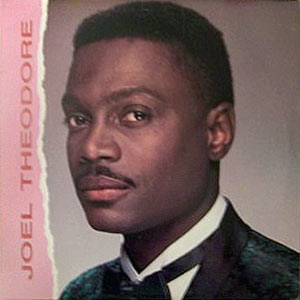he second half of the 1970s remains a pivotal period in the ambient music of the native land. The generation of mini-jazz being at the end of its cycle, some aspiring baladins show their noses in order to artistically contribute to their time. This is how Joël Théodore appeared, a young vocalist fond of serenades among others who is keen on making a place for himself in the spotlight of the local music hall. In a sound environment, especially marked by French varieties. With in particular: Johnny, Cloclo, Sardou, Mike Brant, Lenorman, Fréderic François, Joe Dassin and others as models, while Ansy Dérose and Léon Dimanche and Roger Colas to a lesser extent, constitute in the country the only ramparts of an indigenous song .
While the very refined Gilbert Fombrun, presenter of the popular show: ” Aux trapèzes des étoiles’ ‘on Radio Métropole, as well as Lyonel Benjamin, dashing host of’ tam-Tam 129 ”, on the same waves, also claim their status as songwriter. It is in this ebb and flow that a line of ‘crooner’ amateurs will emerge such as: Romel who already has a hit to his credit, endowed with the refrain: ” I must return to my dear country / because really my life is not elsewhere … ”And also Gérard Pierre with some convincing performances, a certain “ teen idol ” by the name of Ed Sainvill in performances at the auditorium of Saint-Louis de Gonzague, and among others: Frantz Kam, Duval Destin (d.cd recently) ; without forgetting the Carrefour / Fontamara legion with: the diminutive Daddy, Marco Jeanty before he joined forces with Manno Charlemagne.
IT WAS THE ERA OF STUDENT RECITALS AT THE COLLÈGE GRÉGOIRE EUGENE AT AVENUE CHRISTOPHE IN BAS-PEU-DE-CHOSE
And in the same seraglio, the trio André Dubuisson, Erick Mazarin and Joël Théodore who made a splash at Boulo Valcourt’s “ Boulo Show ” on Télé Haiti. Obviously, this is the trigger for Joël who begins to savor his position as a budding star. With its high-pitched and sparse timbre which stands out for its overwhelming musicality. It was the period of student recitals at the Collège Grégoire Eugene at avenue Christophe in Bas-Peu-de-Chose, at Gérard Gourgue at Haut-Peu-de-Chose in Pacot and at Frank Etienne in Bel Air. These schools which consisted of the “ Golf Drouot ” ( 1), Haitian, for these emerging artists. Which wanted to position themselves outside the so-called commercial dance music. But, it is also the continuity of the brain drain in the heart of a country “Pèlen Tèt” for the subsequent generation; who had only one project after school or university: to leave, without leaving any traces, with the disgust of a stateless person.
Nevertheless, Joël Théodore remained in his country, despite thick and thin. Decided to make a considerable impact and establish himself as the voice of his lineage. Successful bet for this minstrel with declamatory verve who knew how to assert his sentimental mark with the release of his first solo album: ” Ti Pitite ” , comprising: I do not understand, Haiti, Diana, sosyete, and I t love it so much, another month,who camps it by interpreting varieties. And at the same time as the idol of the fairer sex who fell backwards for this crazy romantic. At the same time, he was called upon by the “Bossa Combo”, part of the group of which had decided not to return to the land of the uncle- macoutes, during a tour of NY. Including the singer Charly Dorsainvil whom he was to replace to settle in duet with the veteran Raymond Cajuste. To be a kid in a group of old truckers, to whom he had brought new blood, a female audience and new perspectives, after the break-up of NY.
Contributing in this sense to the rebirth of the “Bossa Combo” become “Big band Bossa”. With its freshness, its exuberance and its eloquent voice which has rewarded hits such as: at the beach, Gare du Nord, the boss, arivis, fanm alakokèt etc. While maintaining head-on his “ solo ” career in granting a new record with the songs: je t’aime, nou pa gen dwa kite, yon mòso manman, se pou’n lite, kite m viv, nowèl. A sprawling ascent for Joël who was then invited to so many initiatives. Like being the appropriate timbre of the last collaboration between the conductor “master brain” Nemours J. Baptiste and the “difficult maestro” Webert Sicot in the album : “The union” . In the perpetuation of the konpa-kadans pair, during the first half of the 1980s, just before the latter’s death, he also took part in the work “ Lakòl ” by Claude Marcelin which was a prelude to the new musical generation.
HER IMPENDING DEATH IN A GLOOMY SPRING WAS MOURNED BY ALL MUSIC LOVERS
Subsequently, and faced with the continued deterioration of the moral and material structures of his country, Joël ended up taking part in the general “ save who can ”, moving to Brooklyn, NY with his family. Where he continued to delight his fans in the atmospheres of bistros. Giving us the opportunity to meet again and again at private balls; while giving me the attentions and respect due to an alter-ego. And still astonishing that I did not follow up my musical passion. For my part, I was grateful to him for having stayed the course and representing an artistic sector of which he remained the extension. We then saw each other several times on the artery of Flatbush Avenue in Brooklyn, when he was the victim of a terrible disease. Seeing him wander the streets, stripped of his strength, was not easy. And he never seemed to lose his joviality and good manners. Even finding the time to give me salutary advice. And his imminent death during a gloomy spring was mourned by all lovers of music.
Notes
- The Golf Drout was a former golf course transformed into a performance space which was used to launch the musical careers of artists of the French yé-yé generation such as: Johnny Halliday, Claude François, Michel Polnareff, Eddy Mitchell, Richard Anthony, Jacques Dutronc, Françoise Hardy, among many others.

